10 Ways to Spring Clean Your Diet, According to Dietitians

Spring has sprung, and for many, the warmer weather is synonymous with tidying up their house. While the idea of spring cleaning may not be new to you, exercising this concept when it comes to your diet might be. If you are looking for a diet overhaul to start your spring season on the right foot, you've come to the right place. There are easy swaps, changes, and upgrades you can make in your diet to improve your nutrient intake, work towards weight goals, and promote overall wellness.
When discussing a diet, this simply refers to the food and drink you consume in a day. This word doesn't have to mean a restrictive way of eating, and your diet can and should be made up of a variety of foods from each food group. The timing of your food, portion sizes, and combinations of food are also dietary factors that should be paid attention to.
To feel your best and get more out of the foods you are eating, here are 10 ways to spring-clean your diet. Read on, then check out The 10 Healthiest Drinks to Sip, According to Dietitians.
Prioritize produce.
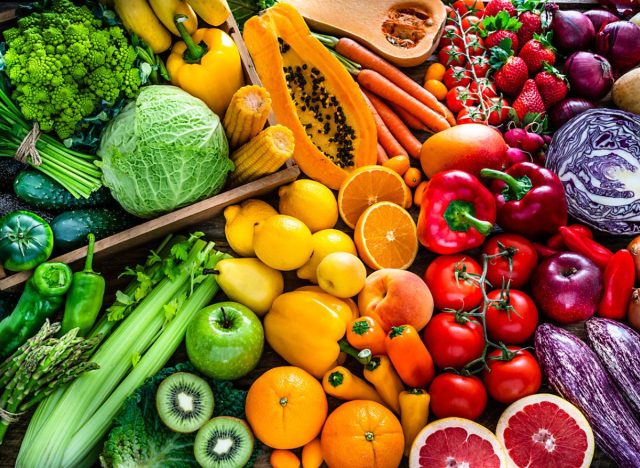
Fruits and vegetables deserve a place on your plate at every meal. Even better, they should also be incorporated into snacks throughout the day. Produce is a source of so many important nutrients, including fiber, vitamins, minerals, and antioxidants. Unfortunately, most Americans aren't eating enough fruits and vegetables.
To boost your intake of essential nutrients, aim to eat at least 5 servings of produce each day. Not only will this supply your body with valuable nutrients, but fruits and vegetables are generally lower in calories than other food groups, allowing you to eat a larger volume of food with fewer calories. This can be helpful for weight loss and is a great way to increase satiety.
Eat less added sugar.

The sugar that you add to your coffee, use in baking, and is found in soda and candy can wreak havoc on your body. In fact, research notes increased liver fat and negative changes in blood lipids in those who frequently consume sugar-sweetened beverages.
As part of your dietary spring cleaning, take inventory of the added sugar in your diet, totaling up your intake for a day or two. From here, start to choose places to cut sugar. This may be using half as much sweetener in your coffee, swapping your afternoon chocolate for a bowl of berries, or drinking one less soda per day. Small changes like these can add up over time, and still allow you to enjoy some of your favorite treats.
Toss refined grains.
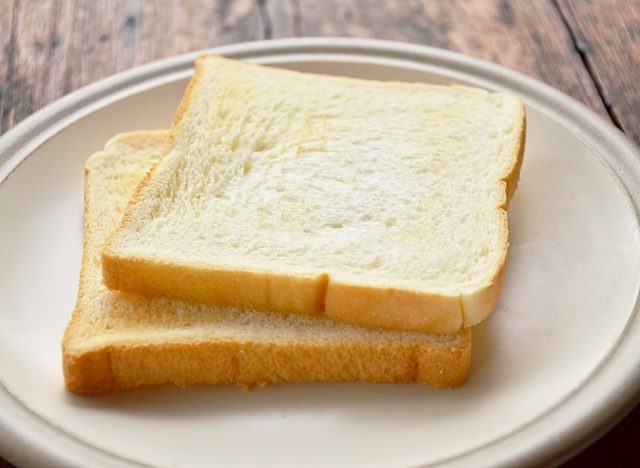
Processed foods, especially those that are carb-based, often include refined grains. White flour is perhaps the most commonly used refined grain, and popular examples of food that contain this ingredient include white bread, some cereals and crackers, and baked goods.
White flour and other refined grains undergo processing that removes vitamins, minerals, and fiber. While the micronutrients are often added back after the refinement process, fiber is not. This makes refined grains less nutrient-dense and less filling than whole grains.
When choosing foods that are made with flour, look for options that include whole-grain flour as the primary ingredient. This generally means the food provides more fiber, making it more nutritious and filling. Reducing your total intake of processed foods is also a good way to limit the refined grains in your diet. Instead, choose carb sources that have undergone less processing, like brown rice, oatmeal, and sweet potato.
Include protein at each meal.

Protein is considered to be the most filling nutrient, so including it at each meal can improve your satiety and may help reduce overeating throughout the day.
This means you shouldn't have just a piece of toast for breakfast or a bowl of pasta for lunch. Rather, pair these common meal staples with a source of protein to create more balanced meals. Use your toast to make an egg sandwich or top with nut butter for a convenient protein source. Instead of plain pasta, add grilled chicken or ground turkey to create a protein-rich meal. If you follow a plant-based diet, try a bean-based option that is much higher in protein and fiber than traditional noodles.
Eating protein at each meal will also enable you to meet your daily protein needs, contributing to your overall health and wellness.
Improve the fats in your diet.
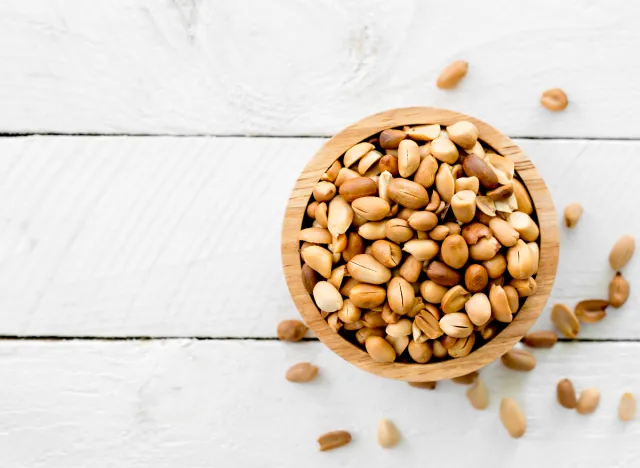
Not all fats are created equally, and those found in processed foods and meat are less beneficial for your health than plant-based sources. Unsaturated fat is the form thought to provide more health benefits, and may even lower your risk of heart disease.
Including more fish and plant-based sources of fat in your diet will help boost your intake of healthy fats. Salmon, tuna, avocado, nuts, and seeds are some of the most popular foods with healthy fat content.
Perhaps one of the most economical sources of unsaturated fats is peanuts. This nut provides 19 vitamins and minerals, protein, fiber, and heart-healthy fats. Not only can you layer peanut butter on bread or include a dollop in a smoothie for an easy source of protein, but peanuts are easy and convenient as an on-the-go snack on their own. Beyond convenience, eating peanuts may also improve your health, as research found that daily consumption of peanuts led to weight loss, lowered blood pressure, and improved fasting glucose levels.
Stay mindful of portions.
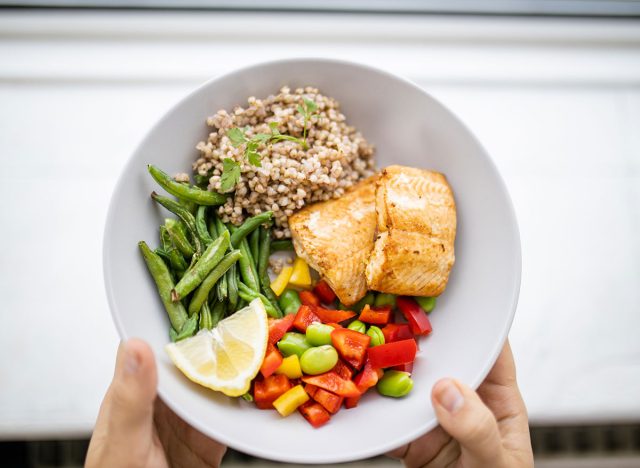
It is common to lose perception of appropriate portion sizes over time. We see large portions at restaurants and that can influence the portions we choose for ourselves at home. Taking inventory of the typical portions you eat is a good step to include in your dietary spring cleaning. Not only may this step enlighten you about the balance of nutrients on your plate, but it could also reveal where you may be getting excess calories that could explain weight challenges.
A good plate visual for healthy adults is to have half of your plate made up of produce with one-quarter of your plate coming from protein, and the remaining quarter providing a carbohydrate. Incorporation of healthy fats in the preparation of vegetables and other foods will contribute to a balanced plate as well.
Clean out your pantry and fridge.

Over a year, you've likely accumulated ingredients that may no longer be good. To ensure your pantry and fridge are stocked with the best foods and drinks for your goals, take time to clean out all expired or spoiled foods. This clean start makes it easier to view the foods you should be using, and gets rid of hazardous options.
While you are at it, toss or donate foods that don't serve your goals. If you are trying to reduce sugar in your diet, for example, get rid of the options that contain this ingredient. Of course, you can keep some treats around, but the fewer temptations you have at home, the more likely you are to stick to your healthier eating plan.
Pay attention to when and why you're eating.

Mindfulness while eating should be a priority in your spring cleaning. Too often we eat based on emotions throughout the day rather than hunger cues. While both approaches can be part of a healthy diet, you should pay attention to when and why you are eating.
The majority of your eating should be because of physiological reasons, like to avoid hunger, to fuel or recover exercise, and to consume necessary amounts of calories, macronutrients, and micronutrients. If you find your emotions are a major driver in your eating habits, or you eat just because there is food easily accessible to you, evaluate whether or not you really want and/or need that food. Being present and intentional about what and when you are eating can improve your overall food intake, and along with that, health and wellness.
Stay hydrated.

Drinking enough water should be one of the easier dietary practices, yet most adults are not meeting their daily needs consistently. Much like eating throughout the day, you should be drinking water regularly, too. Use your scheduled meals and snacks as benchmarks.
For example, aim to drink 20 ounces of water between waking up and finishing breakfast, another 20 before lunch, another 20 before an afternoon snack, and so on throughout the day. Hydration plays an important role in so many body functions, from temperature control to lubricating joints, and even aiding in digestive regularity. Aim to get at least 80 ounces of total fluid per day, at least half coming from plain water.
Eat more fiber.
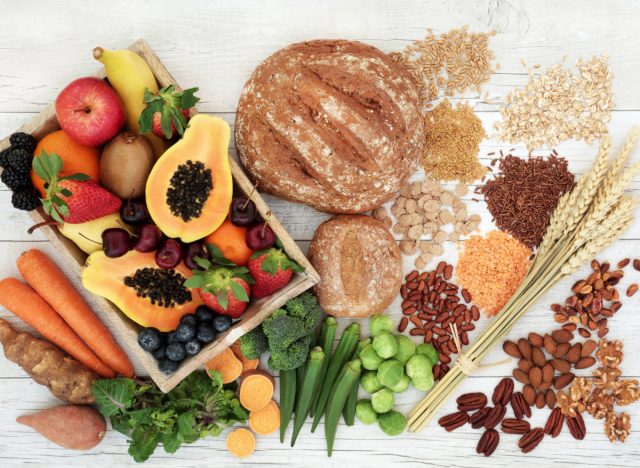
Speaking of digestive regularity, hydration may play a role, but eating enough fiber is essential, too. Fiber can only be found in plant-based foods and is most notable in fruits, vegetables, whole grains, legumes, nuts, and seeds. You should be eating foods from each of these categories every day because they collectively provide a wide range of essential nutrients, but they will also contribute to your minimum fiber needs.
Most adults should be getting at least 25 grams of fiber per day, and some may need even more than this number. Eating a variety of foods from various food groups throughout the day and including those foods previously mentioned can help you meet this minimum intake that can support healthy digestion and heart health.
- Source: Fruits and vegetables Serving Sizes infographic. (n.d.). www.heart.org. https://www.heart.org/en/healthy-living/healthy-eating/add-color/fruits-and-vegetables-serving-sizes
- Source: Gillespie KM, Kemps E, White MJ, Bartlett SE. The Impact of Free Sugar on Human Health-A Narrative Review. Nutrients. 2023 Feb 10;15(4):889. doi: 10.3390/nu15040889. PMID: 36839247; PMCID: PMC9966020.
- Source: Zong, G., Li, Y., Sampson, L., Dougherty, L., Willett, W. C., Wanders, A. J., Alssema, M., Zock, P., Hu, F. B., & Sun, Q. (2018). Monounsaturated fats from plant and animal sources in relation to risk of coronary heart disease among US men and women. The American Journal of Clinical Nutrition, 107(3), 445–453. https://doi.org/10.1093/ajcn/nqx004
- Source: Petersen KS, Murphy J, Whitbread J, Clifton PM, Keogh JB. The Effect of a Peanut-Enriched Weight Loss Diet Compared to a Low-Fat Weight Loss Diet on Body Weight, Blood Pressure, and Glycemic Control: A Randomized Controlled Trial. Nutrients. 2022 Jul 21;14(14):2986. doi: 10.3390/nu14142986. PMID: 35889947; PMCID: PMC9318508.
- Source: Yang J, Wang HP, Zhou L, Xu CF. Effect of dietary fiber on constipation: a meta analysis. World J Gastroenterol. 2012 Dec 28;18(48):7378-83. doi: 10.3748/wjg.v18.i48.7378. PMID: 23326148; PMCID: PMC3544045.
- Source: McRae MP. Dietary Fiber Is Beneficial for the Prevention of Cardiovascular Disease: An Umbrella Review of Meta-analyses. J Chiropr Med. 2017 Dec;16(4):289-299. doi: 10.1016/j.jcm.2017.05.005. Epub 2017 Oct 25. PMID: 29276461; PMCID: PMC5731843.









